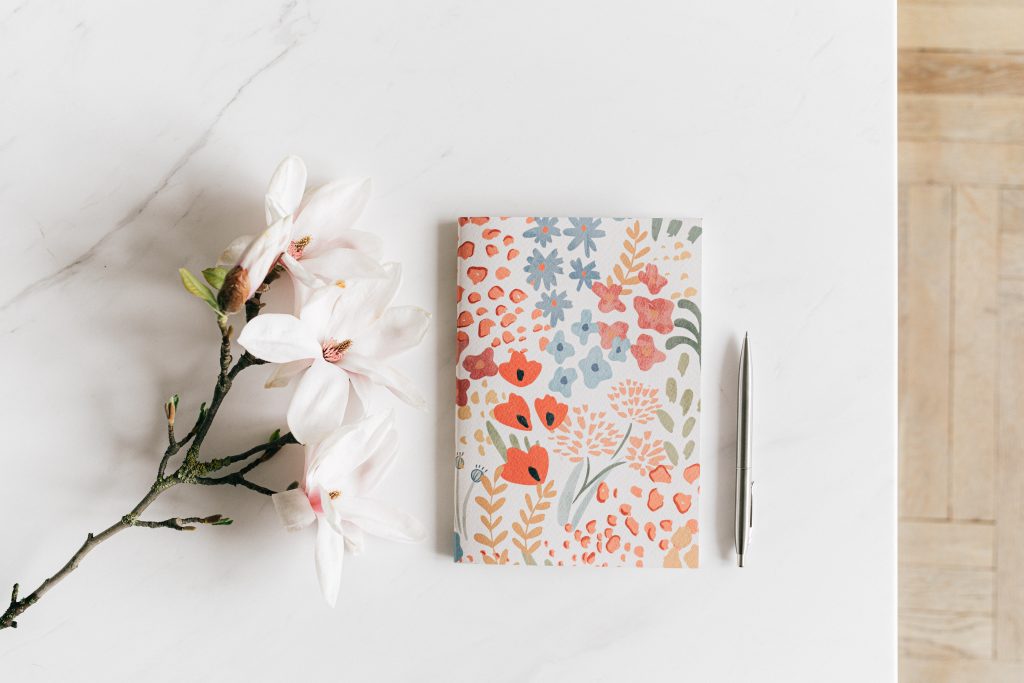Keeping a Garden Journal

Have you ever stood in front of a rack of seed packets trying to remember what variety of peas you planted last year? You know, the one that was a really good producer. Have you called us to order some mulch but can’t remember how much you laid down last year? Or have you have gone out to plant some daffodil bulbs in the fall and mistakenly dug up your tulips because you forgot where you planted them? If so, you need to start a garden journal. Not one where you write all sorts of inspiring, touchy-feely stuff about your garden, but a place where you keep all the information about your garden together, so it is easy to find.
Why a Journal
Keeping a journal will make you a better gardener. It can remind you of things you need to do, keep track of problems you have encountered and their solutions, and teach you the nuances of your garden.
Where To Start
Your journal can be very detailed or very simple. Some things you might want to include are:
- The date of the last frost every spring.
- When you planted seeds indoors, when they germinated, were transplanted, and when you harvested vegetables.
- How many and which varieties of crops you grew, how well they did, and whether you grew enough (or too much) of a certain thing.
- Sketches, or detailed maps, of your garden, where items were planted, and crop rotations.
- Plants lists – what you have, what it needs, where you got it, etc.
- Bloom dates of perennials.
- When you divided or moved perennials
- What products you applied (fertilizer, pest controls, mulch, or soil amendments), how much, and where and when you applied them.
- Which pests you had problems with, when they came, and how you treated the problem.
- Lists – project checklists, garden maintenance to-do lists, wish lists.
- Budgets and receipts
- General successes and failures
- Seed packets and plant tags
- Photos
Ok, that’s a lot! But you don’t have to do it all. On the simplest level, get a monthly calendar or a leftover notebook from around the house and write what you did in your garden and when. Or, if you want to do more but don’t know where to start, you can buy a garden journal from a bookstore that is all organized and laid out for you. There are also many printable journal templates online. At the end of this article there are links to two garden journal templates we’ve made to get you started. Doing a google search for ‘free garden journal templates” is a good place to start. There are several available for garden journal apps iOS or Android.
How to Make Your Own Journal
If you want to design your own, you may want a 3-ring binder, divider tabs, loose-leaf paper, and graph paper if you want to make detailed maps. You might also want page protectors – I accidentally watered one of my journal pages once and lost a lot of great information. Page protectors can also be used as pockets to keep seed packets, photos, plant tags, and receipts in. If you want to get fancy you can spring for zippered pouches and photo album pages.
Dividing your journal into sections will help you find things later. Sections you might want include:
- Bloom Date Chart
- Chart that tracks planting, germination, transplanting, and harvesting each crop.
- Plans/Maps
- Plant Notes
- Maintenance Notes
- Problems
- Ideas
- To Do
- Canning/Freezing Inventory
Maybe you aren’t too keen on a bulky binder. You can easily keep your journal on your computer or phone. You can use OneNote, Evernote, or a database app like Airtable. However you choose to journal, you will find it enormously helpful (and fun) to look back at past years and what you learned, and spring is the perfect time to get started. Happy journaling!
For a basic plant list for perennials go to https://pleasantprairiegreenhouse.com/wp-content/uploads/2022/04/plant-list.docx .
And here is a crop chart for vegetable gardeners: https://pleasantprairiegreenhouse.com/wp-content/uploads/2022/04/crop-chart.docx
